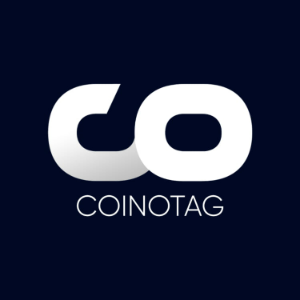Macroeconomic Impacts on Crypto, Hyperliquid, Altcoin Season, and 4-Year Cycles With Binance France President David Prinçay (Interview)
4 min read
2025 has so far been a year marked by persistent geopolitical tensions, monetary challenges, and evolving investor behavior. Amid all this, the crypto markets continue navigating a complex macroeconomic landscape. Bitcoin’s performance, the increasing institutional adoption, the rise of certain fields in decentralized finals, as well as questions around traditional 4-year market cycles are all interesting and constantly discussed topics within the community. In the following conversation, David Prinçay, President of Binance France, offers his perspective on the current state of the market, the competition between centralized and decentralized exchanges, as well as the broader relevance of long-held theories such as the four-year crypto market cycle. What is your take on the current macroeconomic environment and the way Bitcoin is responding to global turmoils? Macroeconomic factors have increased market uncertainty, which has affected crypto in similar ways to traditional asset classes. Crypto increasingly behaves like risk assets, which means that prolonged trade wars or geo-political tensions could result in capital that might have entered crypto either staying on the sidelines or shifting into perceived safe havens like gold. Despite its reputation as ‘digital gold’ and a potential safe-haven, BTC has shown a stronger correlation with equities in the first half of the year than with traditional hedges like gold. However, a deeper look at the market also shows that BTC was less affected by ‘risk-off’ episodes than other crypto assets. According to Binance Research, in April, BTC had dropped 19.1%, while ETH dropped over 40%, and categories like Memecoins and AI plunged more than 50%, suggesting that it is much more resistant to shocks than it may have been in the past. While we have seen price recoveries since then, these types of movement show there can be a vulnerability to sudden policy shifts and macroeconomic drivers. However, analysts will be watching closely to see if BTC is able to retain its appeal as a non-sovereign, permissionless asset in an increasingly protectionist global economy. If inflation and rate cuts become a concern, we could expect to see BTC grow its appeal as an inflation resistant asset once again. This cycle is turning out to be one where Bitcoin is dominating heavily, as the majority of altcoins fail to keep up. Do you think we will see a reversal and the much-anticipated (by many) altcoin season? There are a number of reasons for Bitcoin’s current dominance. We continue to see strong interest in crypto from institutional investors and corporate treasuries (and even from sovereign wealth funds), and naturally their primary interest is in Bitcoin as the most established cryptoasset. There has also been a great deal of economic uncertainty in global markets, whether caused by national economic policies, conflicts or other factors. Both of these factors typically drive BTC dominance in different ways, one as an effect of sustained interest and investment in it as a novel asset class, and the other as a familiar impact of uncertainty and volatility in traditional markets. In the longer term, it’s not possible to say how this might impact the next altcoin season. We may see institutions and corporations seek further diversification in their crypto holdings if or when BTC prices plateau, and markets for traditional assets will eventually regain their confidence. How an altcoin season plays out in a more mature and regulated crypto market will be interesting to see. What is your take on the rising competition centralized exchanges are seeing from decentralized perp trading solutions like Hyperliquid? We are watching these developments with interest and it’s always good to see innovative projects challenging the status quo, it drives competition and inspires product innovation across the industry. We are constantly taking inspiration from across the industry and adding new products that our users love, such as Binance Wallet which recently hit an ATH of $12.5 billion in daily transaction volumes driven by TGEs and airdrops through Binance Alpha. Alpha allows our users to explore early-stage crypto projects with the potential to grow within the Web3 ecosystem as well as earning ‘Alpha Points’ which grant access to exclusive rewards for our most engaged community members. Our focus is to ensure that we continue to develop our business in compliance with our regulatory obligations around the world. We are the largest exchange in the world, and we have a responsibility to ensure that we grow sustainably and, as always, prioritise user protection. Do you think the “four year market cycle” theory is still in play? There’s not yet been any strong evidence to suggest that the four year cycle has been broken. Certainly, there have been corrections that correlate to macroeconomic events but we have also seen price recoveries and fresh all time highs. Over the longer term it will remain to be seen whether macroeconomic factors and maturation of the crypto market will affect the historical pattern of cycles, but it’s not likely that we have reached that point yet. The post Macroeconomic Impacts on Crypto, Hyperliquid, Altcoin Season, and 4-Year Cycles With Binance France President David Prinçay (Interview) appeared first on CryptoPotato .

Source: Crypto Potato



